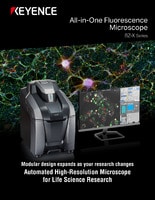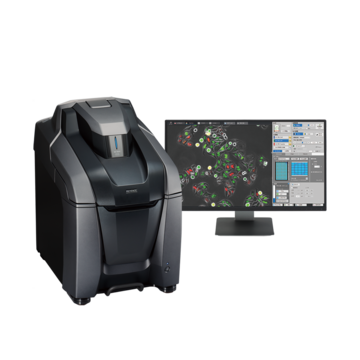Fluorescence Microscopes
Activity of iPS Cell-derived Nerve Cells
Live cell imaging using time-lapse imaging
Video courtesy of
Professor Toshiyuki Yamamoto,
Fixed-Term Assistant Professor Keiko Shimojima,
Institute of Medical Genetics,
Tokyo Women’s Medical University
We’re here to provide you with more details.
Reach out today!

Points on recording
By capturing the action potential of nerve cells using calcium imaging, the activity can be easily observed on the basis of visual changes.
Recording conditions
Magnification: 20x λ lens
Filter: GFP
Fluorescent reagent: Fluo-8
Frame rate: 30 fps



